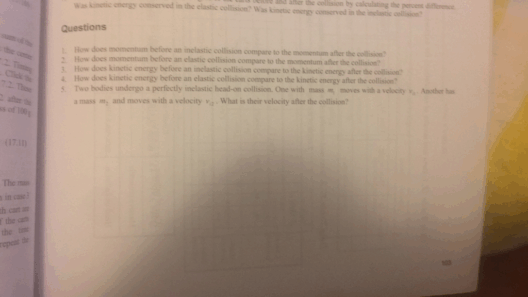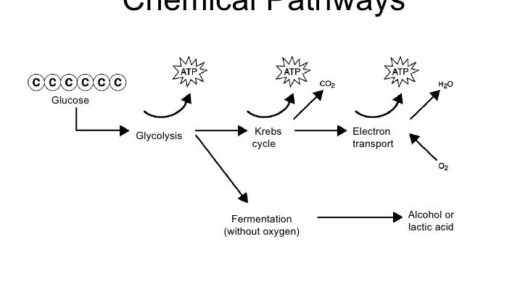What condition guarantees the conservation of mechanical energy? This intriguing inquiry invites contemplation, as mechanical energy plays a pivotal role in our understanding of the physical universe. Imagine a roller coaster soaring through its track—at the pinnacle, it possesses maximum potential energy, while at its lowest point, it transforms into kinetic energy. However, under what circumstances does this energetic ballet maintain its integrity without alterations?
To decode this mystery, we must first delineate the concepts of mechanical energy, comprised of kinetic energy (the energy of motion) and potential energy (energy stored by position). The principle of conservation of mechanical energy asserts that within a closed system devoid of non-conservative forces (like friction or air resistance), the total mechanical energy remains constant.
At the core of this principle lies the concept of an isolated system. An isolated system is one that does not exchange energy with its surroundings, allowing for a seamless transition between kinetic and potential energy. Picture a pendulum swinging back and forth; as it ascends, kinetic energy dissipates, converting into potential energy. Conversely, as it descends, potential energy is converted back to kinetic energy. In an ideal world devoid of external influences, the total mechanical energy of the pendulum would remain unchanged, embodying the very essence of energy conservation.
However, this ideal scenario raises the question: can we ever achieve a perfectly isolated system? Nature relentlessly introduces forces such as friction and air resistance, which dissipate energy into heat, ultimately eroding the purity of mechanical energy conservation. Indeed, energy is continuously transformed from one form to another; each conversion often leads to losses that prevent us from realizing the full potential of our mechanical systems.
Nonetheless, certain conditions allow us to approximate ideal energy conservation. One primary condition is the absence of dissipative forces, which is most idealized in scenarios such as orbital mechanics or celestial bodies’ motion. For example, consider the Earth and Moon; their gravitational interactions create an environment where mechanical energy is nearly conserved, save for minimal energy losses due to tidal friction.
Another criterion vital for conserving mechanical energy involves ensuring that the forces in play are conservative. Conservative forces, such as gravitational and elastic forces, allow for energy redistribution without loss. In contrast, non-conservative forces like friction or drag transform mechanical energy irreversibly into heat. This distinction serves to elucidate why mechanical energy conservation is preserved in settings such as springs or pendulums, as the energy merely oscillates between kinetic and potential forms.
Delving deeper, the conservation of mechanical energy also relies on the system’s symmetry and stability. In a symmetric system, where external perturbations remain minimal, mechanical energy can remain seemingly unscathed. Additionally, in systems that exhibit periodic motion, such as a swinging pendulum, the equilibrium offers a safeguarded environment for energy conservation to flourish. The oscillatory nature of these systems echoes the predictability of mechanical energy transformation, serving as a vivid illustration of energy conservation principles in action.
What about more complex energy systems? Is it possible to configure an intricate mechanism that still adheres to these conservation laws? Indeed! By manufacturing systems designed explicitly to negate non-conservative forces—be it through magnetic levitation or frictionless surfaces—engineers have paved the way for innovations harnessing mechanical energy effectively. Such developments not only exemplify theoretical concepts but also provide practical applications in various fields, including transportation and renewable energy technologies.
Ultimately, the conservation of mechanical energy presents a tantalizing glimpse into the workings of our universe. The awareness of conditions that uphold this conservation principle bears implications across numerous disciplines. From designing roller coasters that evoke thrills while adhering to energy conservation principles to developing advanced energy systems that optimize efficiency, the ramifications ripple through science and technology.
Yet, amid these strides, one must ponder: as we push the boundaries of energy conservation, are we fully aware of the implications? While striving to achieve systems that retain mechanical energy, we must remain cognizant of the broader environmental impacts. Engineers are tasked not only with creating energy-efficient designs but also with ensuring these technologies harmonize with ecological integrity. In our relentless pursuit of energy conservation, we must acknowledge the fragility of our ecosystems, intertwining innovation with responsibility.
In conclusion, the conditions guaranteeing the conservation of mechanical energy hinge primarily on the establishment of an isolated system devoid of non-conservative forces and the presence of conservative forces that enable energy transfer without loss. Although perfectly isolated systems elude our grasp, principles can be approximated, contributing to advancements that transcend theoretical realms into tangible innovations. As society diverges on this path, where energy conservation intertwines with ecological stewardship, the path ahead remains both challenging and exhilarating. Will we successfully balance our technological advancements with environmental sustainability, ensuring future generations inherit a world where both mechanical energy and nature thrive in equilibrium?







